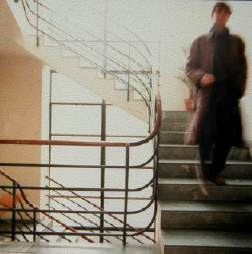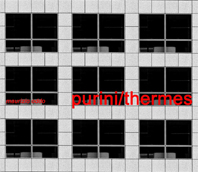Magical Universities or Two and a half points about university education and how architecture will be taught in the future.
Antonino Saggio
Of course I could take four or five different approaches to discussing university education and how architecture should be taught. The first would be political (but my views can be heard on YouTube in a series called "The Compass Points”); the second would be pedagogical (outlining, based on my experience, the most effective way of teaching architecture nowadays) and the third would be based on contents (I have been teaching since 1984: I have done plenty of teaching in America at Carnegie-Mellon and at Zurich-Eth and then in Africa and for a while in Germany and China, as well as plenty of experience at La Sapienza in Rome), and since I now have over 25 years’ work experience I have got plenty of interesting stories to tell; finally, the fourth approach would be strategic: how to revise how architecture is taught in the future.
Except for the third approach, I have no direct responsibility for what happens, so these thoughts are aimed at those people who are directly responsible and would say: "Yes, I realise that is how things should be, but I don't have the power..the system cannot do it and does not want to". And deep down inside myself I always think of my own secret motto.
In any case, the end result is that, seeing as our system cannot and will not, all the others, who do not have "systems", actually do things based on ideas. We are so paralysed here in Italy that we are not even supposed to say how things are any more or how they should be. We should just settle for the way things "are", because that is how the system has produced them! Thank goodness this magazine provides the chance to debate these ideas.
At this point, I could close just by reiterating what is stated above and refer, if you are interested in studying these matters further, to the blog where all my lectures are available in podcast or to the website of the University where all these theories have been set out in full since 1998, or alternatively the publication Roma a_venire, which outlines some ideas for transforming the city or installations for “Spot on Schools”.
But I think it would be useful to outline, if only in brief, the crux of these matters.
To begin with, university policy. Unless we get rid of that distinctly Italian anomaly of disciplinary realms, our universities will just die out (I'd like to remind you that Zevi criticise this kind of piecemeal organisation back in 1979). To explain these matters more clearly would require quite a bit of space, but in a nutshell let's say that in Italy the academic power system does not, as is the case all over the rest of the world as far as I know, focus around the overall interests of this disciple and the education facilities which promote these interests through scientific teaching. On the contrary, it is organised in terms of what are referred to as disciplinary areas. The subject matter of, say, architecture is split into dozens of different realms (drawing, restoration, history, design a, b, c, town-planning e, f, g and so forth). The point is that each of these disciplinary areas organises its academic power based on its own specific interests, which are basically self-centred. They handle their own admissions, direct career paths and reward research projects etc. In other words they are organised just like that other great Italian institution: the family. This aberrant situation has resulted in the monstrous decline of Italian universities. "None of them" are ranked among the top 100. Take a look at the following Internet site, it is humiliating (/www.arwu.org/).
This grip on power is strangling and will strangle everything. Of course the government knows this and has compromised by reducing the number of these realms. But in actual fact they need to be done away with completely! The second point is pedagogical. I am increasingly convinced that education should be taught on a deductive basis. Students should learn how to formulate "hypotheses" (and lots of them) and then carry out further study by testing out these hypotheses under an increasing range of conditions, requirements and facts. This deductive approach is the key to the whole of contemporary thinking and is closely tied to electronics and cutting-edge simulation tools. Of course this point, like the previous one, needs to be studied in detail.
A third point concerns contents, in particular those of architectural design and town-planning. Of course plenty of work needs to be done here on updating and upgrading teaching, making it less provincial and enhancing experimental activities, something which is almost impossible bearing in mind the first point: as for me, for years now I have been adopting a tactic based on connecting architectural design more concretely to all those opportunities and efforts being made to transform the city. The project is called "Urban Voids". This takes us to the final point. How can we rethink architectural studies in relation to a world which has completely changed and which, on one hand, has to tackle a planetary crisis and, on the other, is equipped with brand-new and extremely powerful tools? In my opinion architectural teaching needs to be completely revised and redeveloped based on two (and a half) emerging paradigms. The first is the "systemic" paradigm (people and the environment must not be seen as separate but rather as one unitary whole governed by the biosphere.. an idea first devised by Buckminster Fuller). Let me explain myself. The kind of architecture we are familiar with in Italy is still often taught based on an industrial/mechanical model drawing on the tradition of the Modern Movement. From this viewpoint architecture is, of course, an object and treated as such. It is divided up and sectioned into its various different aspects.
But modern-day thinking vehemently rejects this idea and adopts the opposite approach. What counts are relations, not the object. The objects - which may be plans, landscapes, design products, buildings or settings etc. - are just the materialisation of relations. We need to start with relations not objects! Moreover, these relations are systemic, particularly in relation to the environment. They are systemic on a gigantic scale and magnitude: Powers of Time, as that famous film by Charles and Ray Eames claimed.
We do not begin with people and the environment but with relations between cultural, historical, economic and geographical realms, and these realms are dynamically interrelated (this is the great lesson taught by my maestro-friend John Allen). Of course computer technology, the second paradigm, is now the key to achieving this on all levels! Starting with the micro-material level (nanotechnology shows how to do this and will continue to do so even more). But let's come to the "half" paradigm. Gregory Bateson outlined this paradigm and also used that key term which is, whether we like it or not, "magical". As well as being systemic and computer-based, a new kind of education must also be magical! Magical, not dreamlike, because it is art, the dream of art, which lets us see everything clearly. And architecture is the materialisation of this dream, it cannot do without it.
Welcome on board this Ark. If we think and work in this way we will be saved, I promise you, despite the great flood.
Listen the key speech in Antigua Guatemela
"Paradigms on Architectural Education" (In English) See the images Images;
Read the article In Italian





